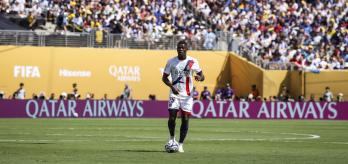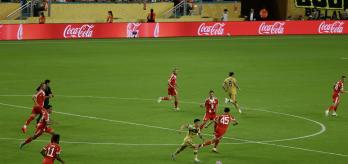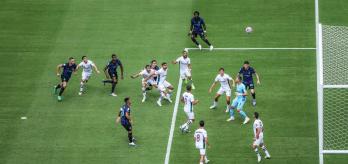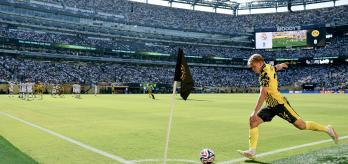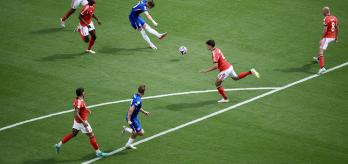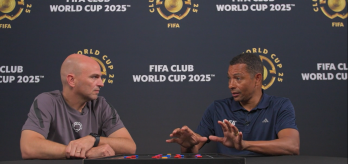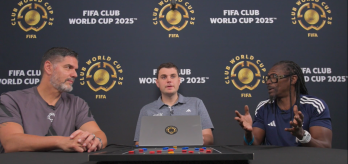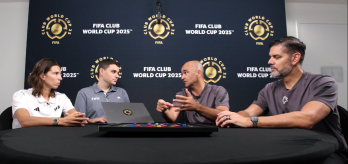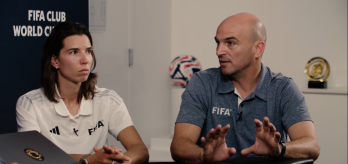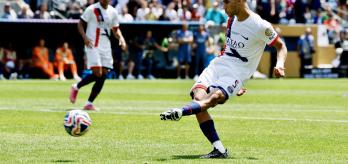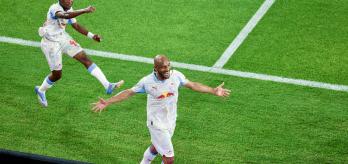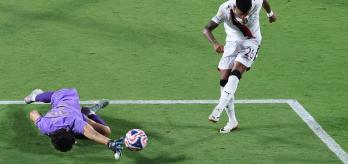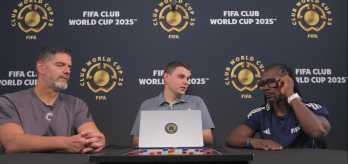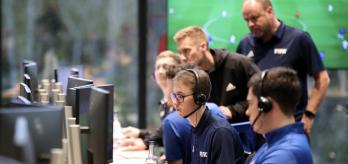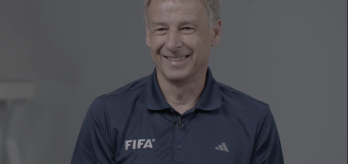During FIFA Club World Cup 2025™, a total of 37 goals were scored from corners and free kicks (compared to 27 scored during FIFA World Cup 2022™ (FWC22)), with 24 scored from corners and 13 scored from free kicks (5 direct, 8 indirect). Overall, this saw goals from these two types of set plays increasing by +0.06 to 0.27 per 60 minutes ball-in-play time (p60 BIP), highlighting a shift from one goal in every five matches to one goal in every four.
Note: For the purpose of this article, the term “set plays” refers only to corners and free kicks.
Chelsea FC led set-piece efficiency, winning first contact on 73% of their set plays, with 45% leading to an attempt at goal. In addition, they were one of only three teams to take more than half of their corners short, doing so 60% of the time (alongside Espérence de Tunis, with 67%, and LAFC, with 50%), with all three operating significantly above the tournament average of 21%. However, Manchester City FC were the most efficient scorers from set plays, scoring an average of 1.2 goals p60 BIP, resulting in a 9.6% conversion rate. CR Flamengo ranked second (0.83 p60 BIP) with a rate of 8.8%.
Set-play phases
First phase: Where the defensive team are in the structure (with individual players performing visible pre-defined roles), taken up to defend the initial delivery from the attacking team’s set-play restart. The first phase remains active throughout the duration of the defensive team retaining this set-up until it is disrupted or adapted.
Subsequent phases: Where the defensive team have assumed an adapted defensive structure to defend an attacking delivery following the first phase of a set play until the attacking team’s possession sequence or penalty-area entry is disrupted.
Overall, the efficiency of generating goalscoring opportunities from set plays increased during FIFA Club World Cup 2025 (FCWC25). Attempts at goal in the first phase of set plays increased by +4.0% to 28.1% during FCWC25 when compared to FWC22 (24.1%), with an increase of +0.7% for goals scored in the first phase.
Second phase attempts at goal also increased, rising by +4.9%. However, goals scored from set plays in this phase decreased from 1.6% in FWC22 to 0.5% in FCWC25.
The largest increases were recorded in the subsequent phases of set plays, whereby the attacking team sustained the attack that originated from a set play for three or more phases. In this metric, an increase of +7.4% to 24.2% was recorded in attempts at goal, while goals scored in these phases jumped by +1.3%, from 1.0% in 2022 to 2.3% in 2025.
Attacking teams were also more successful at securing first contacts from set plays during FIFA Club World Cup 2025, achieving them for 47% of all corners taken, up +6.0% from FWC22 (41%). Chelsea were the highest-ranked team (73%) for securing first contacts on their attacking set plays, with Fluminense FC and CA Boca Juniors in joint-second place on 67%. Auckland City FC (17%), FC Salzburg (27%) and Borussia Dortmund (30%) were the lowest-ranked teams.
Attacking corners
Overall, teams were more successful at generating goalscoring opportunities from corners during FIFA Club World Cup 2025 compared to FIFA World Cup 2022, with the conversion rate of corners into attempts at goal jumping by +7.2% to 38.5%. A total of 24 goals were scored from corners during FCWC25 compared to 15 in FWC22.
On average, 5.2 corners were awarded per 60 minutes of ball-in-play time (+0.8 from FWC22), with attempts at goal from corner phases of play increasing by +0.6 to 2.2 p60 BIP. Direct deliveries into the penalty area dropped by -5.0% to 76%, while deliveries to the edge of the area rose by +3.0% to 21%.
More than half (52%) of all corners that were delivered direct to the penalty area were inswingers, up +11% from FWC22, with an increase of +6.0% in outswinging deliveries, from 38% in FWC22 to 44% in 2025, while decreases were recorded in lofted, push and driven delivery styles. When FC Bayern München and Borussia Dortmund delivered their corners directly into the penalty area, 100% of those deliveries were inswingers.
As can be seen in graphic 3 below, the majority of first contacts secured from inswinging corners occurred in the near-post and centre-of-goal spaces of the goal area (six-yard box), while the majority of first contacts for outswingers occurred in the near-post and centre-of-goal space just outside the goal area. The highest number of first contacts secured for lofted deliveries arose at the central edge of the penalty area.
Four goals apiece were scored from the near-post and far-post locations inside the goal area, while four additional goals were scored from the centre-of-goal space just outside the goal area, making these three locations the most potent for goals scored from corners during FCWC25.
Attacking free kicks
A total of 13 goals were scored from free kicks (5 direct, 8 indirect) in FIFA Club World Cup 2025, compared to 12 (2 direct, 10 indirect) during FIFA World Cup 2022. The proportion of goals scored from free kicks (6.5%) was consistent with FWC22 (also 6.5%). However, there was a +10.6% increase to 46.6% in the number of free kicks that contained an attempt at goal.
The biggest increase in attempts at goal from free kicks occurred in the 3+ phase, with a rise of +6.9% recorded, while a slight increase (+1.0%) was noted in the percentage of free kicks that contained a goal, up to 4.1% during FCWC25 from 3.1% in FCWC22.







